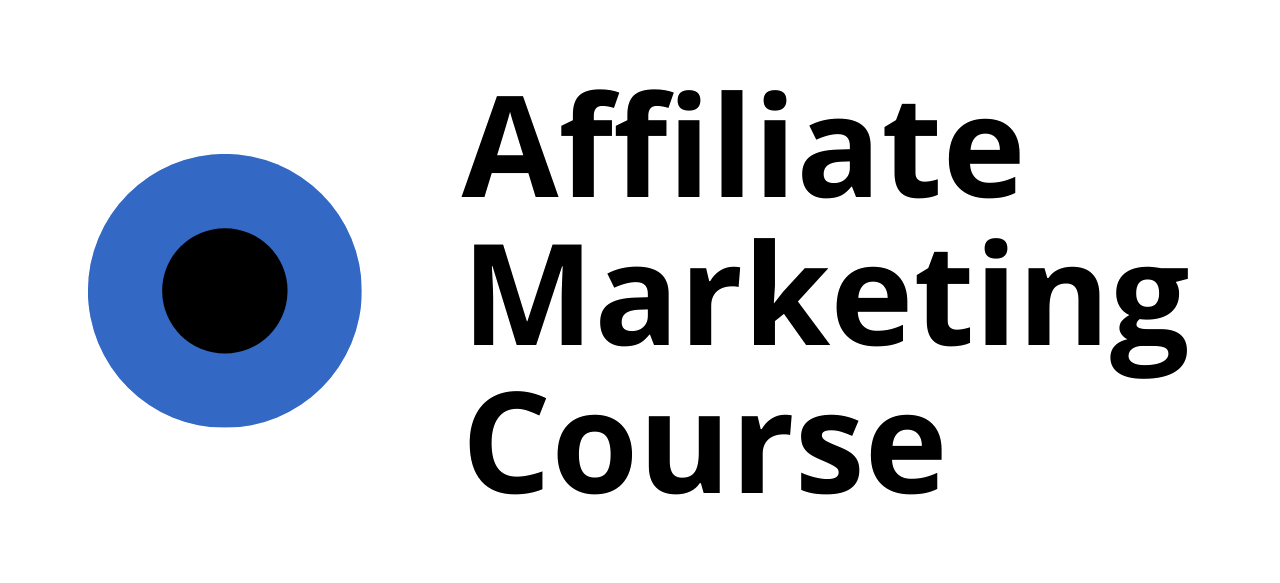Setting and achieving your affiliate marketing goals requires a strategic approach that balances ambition with practicality. With countless opportunities to engage with audiences and monetize your efforts, affiliate marketing offers vast potential for growth and revenue. However, navigating the complexities of this dynamic field can feel overwhelming, especially when trying to balance short-term gains with long-term success. Whether you’re looking to earn a consistent income, build brand authority, or drive traffic through partnerships, mastering the art of setting achievable goals is crucial. This guide delves into actionable strategies, real-world examples, and proven techniques to help you master affiliate marketing, ensuring you stay ahead of competitors and maximize your earning potential.
To effectively set and achieve your affiliate marketing goals, follow this structured approach:
SMART Goals Framework
- Specific: Define clear, actionable objectives. For example, “Increase online sales by 25% in the next quarter.”
- Measurable: Establish metrics to track progress, such as unique website visitors or conversion rates.
- Achievable: Set realistic targets that challenge but are attainable. Start with a 10% increase if you’re new, then scale up.
- Relevant: Align goals with your business objectives, such as driving traffic through content marketing for fitness products.
- Time-bound: Assign deadlines, like achieving a 15% sales increase by the end of Q3 using a new affiliate program.
5 Cs of a Marketing Plan
- Company: Understand your business goals and strengths, focusing on areas like content creation.
- Collaborators: Partner with affiliates or influencers with similar audiences, such as fitness bloggers.
- Customers: Create buyer personas, e.g., a 25-year-old female fitness enthusiast or a 35-year-old gym owner.
- Competitors: Analyze competitors’ gaps, like their lack of video content, to create unique offerings.
- Context: Consider external factors like trends towards home workouts and adjust content accordingly.
Implementation Strategies
- KPIs: Track metrics like click-through rates and bounce rates to gauge success.
- Flexibility and Adjustments: Review goals quarterly or after campaigns to stay adaptable.
- Resource Allocation: Consider budget constraints when planning campaigns and strategies.
- Monitoring and Evaluation: Keep records of goals, strategies, and results for ongoing improvement.
By combining the SMART goals framework with the 5 Cs of a marketing plan, and incorporating regular evaluations, you can set clear, achievable objectives and monitor your progress effectively. This approach ensures you stay organized, flexible, and on track to meet your affiliate marketing goals.

Primary Goal of Affiliate Marketing
The primary goal of affiliate marketing is to drive sales for the affiliate’s partner company. This performance-based marketing model incentivizes affiliates to promote products or services by earning a commission for every qualifying sale made through their unique referral links. The success of an affiliate program is measured by the number of conversions generated, making it a cost-effective and scalable strategy for both businesses and affiliates.
Key aspects of affiliate marketing include:
- Performance-Based Compensation : Affiliates are typically compensated based on the actions of their referred customers, such as clicks, leads, or purchases. This structure ensures that both parties are motivated to achieve mutual success.
- Trust and Credibility : Affiliates build trust with their audience, which can enhance the likelihood of conversions. A trusted affiliate is more likely to be believed and relied upon by their followers, leading to higher engagement and sales.
- Broad Audience Reach : Affiliate networks allow companies to tap into audiences that might otherwise be difficult to access, expanding their market reach and potential customer base.
- Cost-Effective Model : Unlike traditional advertising, affiliate marketing often requires no upfront costs. Companies only pay when a sale is made, making it a flexible and budget-friendly approach.
By fostering these relationships, affiliate marketing not only increases sales but also builds long-term partnerships and brand advocates, contributing to sustained growth and brand loyalty.
What is the 80/20 Rule in Affiliate Marketing?
The 80/20 rule in affiliate marketing refers to the principle that 20% of your affiliate partners will generate 80% of your total sales. This ratio emphasizes the importance of identifying and leveraging top-performing affiliates to maximize revenue. Here’s a breakdown of how to apply this strategy effectively:
Key Points to Understand
- Focus on Top Performers : Identify affiliates that consistently deliver high conversion rates and sales. These are often the driving force behind your program’s success.
- Reward High Performers : Offer better commission structures, bonuses, or exclusive deals to incentivize top performers to continue their excellent work.
- Expand Your Network : Continuously recruit new affiliates to diversify your network, but prioritize building relationships with those showing potential.
How to Identify Top Performers
- Monitor Performance Metrics : Track key metrics like click-through rates (CTR), conversion rates, and earnings per click (EPC) to evaluate affiliate performance.
- Leverage Data Analytics : Use tools to analyze sales data and identify which affiliates are contributing the most to your program.
- Stay Updated : Regularly review your affiliate network to ensure you’re aligned with the best talent available.
Leveraging the 80/20 Strategy
- Recruit Top Talent : Focus on attracting experienced and skilled affiliates who understand your niche and audience.
- Offer Exclusive Opportunities : Provide unique incentives or products to entice top performers to promote your brand exclusively.
- Optimize Commissions : Adjust your commission structure to reward affiliates for their hard work, encouraging them to push their limits.
Optimizing Your Affiliate Program
- Enhance Offers : Create compelling products or services that appeal to your target audience, making it easier for affiliates to succeed.
- Implement Tracking Systems : Use robust tracking software to monitor affiliate performance and adjust strategies accordingly.
- Communicate Regularly : Maintain open lines of communication with your affiliates, offering support and sharing insights to help them succeed.
By applying the 80/20 rule thoughtfully, you can build a thriving affiliate marketing program that consistently delivers results. Remember, it’s not just about finding the right affiliates but also about nurturing relationships with your top performers to drive long-term success.
Learn more about optimizing your affiliate marketing strategy .

Can You Make $100 a Day with Affiliate Marketing?
Yes, it is possible to earn $100 a day through affiliate marketing with consistent effort and strategic planning. Below are the key steps and strategies to achieve this goal:
1. Choose a Niche
- Select a niche you are passionate about or familiar with. A focused approach ensures targeted traffic and higher conversion rates.
2. Build an Audience
- Create content around your chosen niche to attract visitors. Use platforms like blogs, YouTube, or social media to share valuable information and establish credibility.
3. Monetize Effectively
- Place affiliate links strategically within your content. Write product reviews, comparisons, and guides that highlight the benefits of the products you promote.
4. Leverage Email Marketing
- Build an email list and send regular newsletters with affiliate offers. This allows you to reach your audience directly and increase conversion rates.
5. Optimize for Performance
- Use tracking tools to monitor your campaigns. Analyze which strategies perform best and adjust your approach accordingly to maximize earnings.
6. Stay Consistent and Patient
- Building a successful affiliate marketing business takes time. Stay committed, experiment with different tactics, and remain patient as you work towards achieving your goals.
By following these steps and continuously improving your strategies, you can build a profitable affiliate marketing business that generates $100 or more per day. Remember to leverage resources like AffiliateMarketingCourse.biz to enhance your skills and stay ahead of the competition.

What are the five goals of marketing?
The primary objectives of marketing can be broken down into five key goals:
- Brand Awareness: Building recognition and trust for your brand among your target audience. This involves consistent messaging, impactful campaigns, and establishing brand identity through logos, slogans, and product quality.
- Lead Generation: Attracting potential customers who show interest in your products or services. This is often achieved through lead magnets, targeted ads, and engaging content that encourages visitors to share their contact information.
- Sales Growth: Driving revenue by converting interested leads into paying customers. This can be done through promotions, discounts, and tailored offers that address the specific needs of your audience.
- Customer Retention: Keeping existing customers satisfied and loyal to your brand. This is accomplished through excellent customer service, personalized experiences, and loyalty programs that reward repeat purchases.
- Delivering Value: Providing solutions, experiences, or outcomes that exceed customer expectations. This ensures satisfaction and builds long-term relationships with your audience.
By focusing on these five goals, businesses can create effective marketing strategies that resonate with their audience and drive success. We recommend exploring our Affiliate Marketing Course to learn more about achieving these objectives through proven techniques and tools.
What Are the 5 SMART Goals in Marketing?
SMART goals are a widely used framework for setting clear, achievable, and effective objectives. In the context of marketing, applying the SMART criteria ensures that your goals are well-defined, measurable, and aligned with your overall business strategy. Below are the five components of the SMART goal framework, along with examples tailored to marketing scenarios:
1. Specific
A specific goal clearly defines what you want to achieve. Vague goals like “increase sales” lack direction and are difficult to measure. Instead, specify exactly what you aim to accomplish. Example:
- Increase website traffic by 30% in the next quarter.
- Launch a new product campaign focused on eco-friendly packaging.
2. Measurable
Measurable goals establish a clear benchmark for success. You need to define how you will track progress and determine when the goal has been achieved. Example:
- Improve conversion rates from 2% to 5% within six months.
- Increase social media engagement by 20% monthly.
3. Achievable (Aspirational)
Achievable goals are realistic yet challenging enough to drive growth and innovation. They should inspire your team but still feel attainable. Example:
- Expand into three new international markets within two years.
- Double annual revenue through strategic partnerships.
4. Relevant
Relevant goals align with your organization’s mission and long-term objectives. They should contribute to the bigger picture rather than being disconnected from broader goals. Example:
- Develop a loyalty program to retain 80% of existing customers.
- Adopt AI-driven tools to enhance customer segmentation efforts.
5. Timely
Timely goals establish a deadline or timeframe for achieving the objective. This creates a sense of urgency and helps in prioritizing tasks. Example:
- Complete a comprehensive digital marketing audit by the end of Q3 2025.
- Roll out a new email marketing campaign every quarter.
By applying the SMART framework, marketing teams can set goals that are well-defined, measurable, and aligned with organizational objectives. This approach enhances accountability, fosters collaboration, and increases the likelihood of achieving desired outcomes.

What Are the 5 C’s of a Marketing Plan?
The 5 C’s of a marketing plan are a fundamental framework used to analyze and develop strategies effectively. Here’s a breakdown of each component:
- Company : Understand your own organization’s goals, values, and internal capabilities. This includes your mission, vision, and strengths, which form the foundation of your strategy.
- Collaborators : Identify key partners, affiliates, or influencers you work with. Their contributions and relationships significantly impact your marketing efforts and can open new opportunities.
- Customers : Focus on your target audience, understanding their demographics, psychographics, and behavior. This helps tailor your strategies to meet their needs and preferences.
- Competitors : Analyze your competition to identify gaps and opportunities. Knowing your rivals allows you to differentiate yourself and anticipate market changes.
- Context : Consider the broader environment, including economic trends, industry developments, technology, and regulations. These factors shape your strategy and require adaptability.
By integrating these five components, you create a well-rounded and adaptable marketing plan that accounts for both internal and external influences, ensuring long-term success and competitiveness.




0 Comments